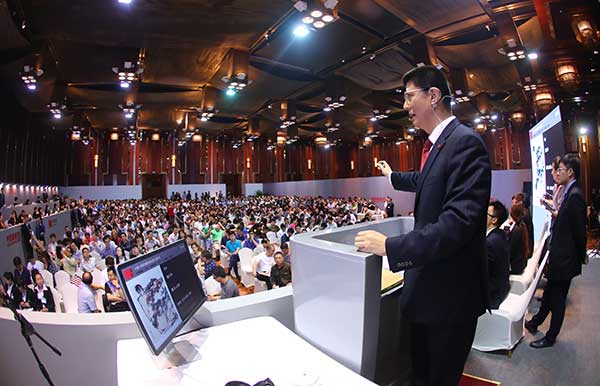 |
|
A Chinese painting of ink master Pan Tianshou (seen on the monitor above) fetched 279 million yuan ($42.8 million) at a Beijing sale last year.[Photo provided to China Daily] |
For museum-quality ink works created by old masters, the prices went too high in the past years of the market boom.
"Many high quality works are now in private collections or in public institutions like museums and galleries, and are not available for resale in a short period of time," Xu says, adding that fresh works are scarcely found these days.
Last year, auction houses also tried to prop up categories that had been less popular, such as calligraphic works by celebrities and rubbings of ancient tablet inscriptions, but the attempts have had limited success.
Compared with a cooling salesroom in China, the US saw a market revival motivated by several auction results of mind-blogging prices, with contribution from rich Chinese from the mainland.
In New York, the center of the world art market, collector couple Liu Yiqian and Wang Wei splashed $170 million on Amedeo Modigliani's Reclining Nude in November, Wang Jianlin bought a Monet for $20 million and an unidentified mainland collector bagged a Van Gogh landscape for $66 million.
"Top-notch Chinese collectors are diversifying their art properties in a positive manner. After lifting up the prices of artists at home, they are now betting on European old masters, Impressionist artists, modern and contemporary figures," Thierry Ehrmann, founder of artprice.com, writes in a preface to the art report.
Right now it's hard to say that these extravagant purchases will spread to the majority of mainland collectors. Xu says it's undeniable that more Chinese are eyeing foreign art, including works from South Korea, Japan and Southeast Asia, where quality works are produced but at moderate prices as compared with the overly hyped market of Chinese contemporary art.
While mainland art hubs - Beijing, Shanghai and Guangzhou - declined sharply in the overall turnover stakes, Hong Kong registered a better market performance with an 8 percent rise last year, the report says.
"Hong Kong reaffirms its status as a leading Asian art trade center even with the slump in the general market," Xu says.
She says its position as a mature, competitive market is supported by a stable group of international clients and varied sources of art, which outperform the mainland market that is overly dependent on Chinese collectors and Chinese paintings.
|
|
|
|
|
|
|
|
